About the Books
Year Published: 2016
Page Count: 1282
ISBN: 978-1-925489-23-1 (9781925489231)
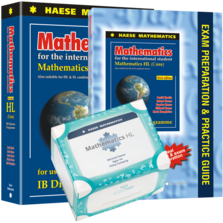
Discontinued Editions
Stock available from Australian warehouse, and US warehouse.
Year Published: 2016
Page Count: 1282
ISBN: 978-1-925489-23-1 (9781925489231)


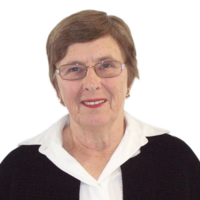
Sandra completed a Bachelor of Science at the University of Adelaide, majoring in Pure Mathematics and Statistics. She taught at Underdale High School and Westminster School before founding Haese and Harris Publications (now Haese Mathematics), together with husband Robert (Bob) and colleague Kim Harris.
What drew you to the field of mathematics?
I always found mathematics the easiest subject at school. I’m not sure why. I intended to study Chemistry at university, but found I didn’t enjoy it as much as I thought I would – so I came back to mathematics, and have been involved with it ever since.
What motivated you to switch from teaching to writing mathematics books?
Bob used to write notes for his class. Other teachers at the school used the notes, then teachers at other schools started asking for them. Eventually Bob said, “Well, I might as well start writing textbooks!”
Initially, I was proofreading. As the workload increased, I began editing as well as proofreading. It just gradually became a full-time job, between writing material, editing and proofreading it, and then distributing the books. These days, Michael does the editing and I do proofreading and audio.
How has the field of textbook publishing changed in the years since you started?
When we started, text was typed and worked solutions were handwritten. Bob would draw any graphics by hand.
We moved to typesetting, but writing a mathematics textbook with the printing tools available presented its own difficulties. For example, symbols had to be copied, cut and pasted by hand onto the original pages, which was very tedious and time-consuming! Fractions were also problematic: we would type a line containing all the numerators, and then a line underneath for all the denominators.
Now it’s all done by computers, which is very much easier, and quicker!
What interests you outside mathematics?
I own a few alpacas. I enjoy my garden - I don’t do much in it, but I enjoy it! I like listening to music; mainly classical, but I enjoy other genres as well.
I really love to travel. The scenery, the history of a place, its architecture, its art – all of those things fascinate me. As a result I also enjoy photography; I like taking pictures of the things I’ve seen and places I’ve experienced.
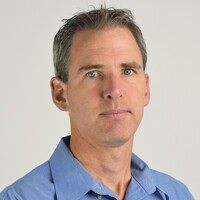
Michael completed a Bachelor of Science at the University of Adelaide, majoring in Infection and Immunity, and Applied Mathematics. He studied laminar heat flow as part of his Honours in Applied Mathematics, and finished a PhD in high speed fluid flows in 2001. He has been the principal editor for Haese Mathematics since 2008.
What motivates you to write mathematics books?
My passion is for education as a whole, rather than just mathematics. In Australia I think it is too easy to take education for granted, because it is seen as a right but with too little appreciation for the responsibility that goes with it. But the more I travel to places where access to education is limited, the more I see children who treat it as a privilege, and the greater the difference it makes in their lives. But as far as mathematics goes, I grew up with mathematics textbooks in pieces on the kitchen table, and so I guess it continues a tradition.
What do you aim to achieve in writing?
I think a few things:
What interests you outside mathematics?
Lots of things! Horses, show jumping and course design, alpacas, badminton, running, art, history, faith, reading, hiking, photography ....
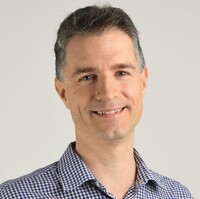
Mark has a Bachelor of Science (Honours), majoring in Pure Mathematics, and a Bachelor of Economics, both of which were completed at the University of Adelaide. He studied public key cryptography for his Honours in Pure Mathematics. He started with the company in 2006, and is currently the writing manager for Haese Mathematics.
What got you interested in mathematics? How did that lead to working at Haese Mathematics?
I have always enjoyed the structure and style of mathematics. It has a precision that I enjoy. I spend an inordinate amount of my leisure time reading about mathematics, in fact! To be fair, I tend to do more reading about the history of mathematics and how various mathematical and logic puzzles work, so it is somewhat different from what I do at work.
How did I end up at Haese Mathematics?
I was undertaking a PhD, and I realised that what I really wanted to do was put my knowledge to use. I wanted to pass on to others all this interesting stuff about mathematics. I emailed Haese Mathematics (Haese and Harris Publications as they were known back then), stating that I was interested in working for them. As it happened, their success with the first series of International Baccalaureate books meant that they were looking to hire more people at the time. I consider myself quite lucky!
What are some interesting things that you get to do at work?
On an everyday basis, it’s a challenge (but a fun one!) to devise interesting questions for the books. I want students to have questions that pique their curiosity and get them thinking about mathematics in a different way. I prefer to write questions that require students to demonstrate that they understand a concept, rather than relying on rote memorisation.
When a new or revised syllabus is released for a curriculum that we write for, a lot of work goes into devising a structure for the book that addresses the syllabus. The process of identifying what concepts need to be taught, organising those concepts into an order that makes sense from a teaching standpoint, and finally sourcing and writing the material that addresses those concepts is very involved – but so rewarding when you hold the finished product in your hands, straight from the printer.
What interests you outside mathematics?
Apart from the aforementioned recreational mathematics activities, I play a little guitar, and I enjoy playing badminton and basketball on a social level.
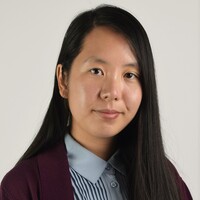
Ngoc Vo completed a Bachelor of Mathematical Sciences at the University of Adelaide, majoring in Statistics and Applied Mathematics. Her Mathematical interests include regression analysis, Bayesian statistics, and statistical computing. Ngoc has been working at Haese Mathematics as a proof reader and writer since 2016.
What drew you to the field of mathematics?
Originally, I planned to study engineering at university, but after a few weeks I quickly realised that it wasn't for me. So I switched to a mathematics degree at the first available opportunity. I didn't really have a plan to major in statistics, but as I continued my studies I found myself growing more fond of the discipline. The mathematical rigor in proving distributional results and how they link to real-world data -- it all just seemed to click.
What are some interesting things that you get to do at work?
As the resident statistician here at Haese Mathematics, I get the pleasure of writing new statistics chapters and related material. Statistics has always been a challenging subject to both teach and learn, however it doesn't always have to be that way. To bridge that gap, I like to try and include as many historical notes, activities, and investigations as I can to make it as engaging as possible. The reasons why we do things, and the people behind them are often important things we forget to talk about. Statistics, and of course mathematics, doesn't just exist within the pages of your textbook or even the syllabus. There's so much breadth and depth to these disciplines, most of the time we just barely scratch the surface.
What interests you outside mathematics?
In my free time I like studying good typography and brushing up on my TeX skills to become the next TeXpert. On the less technical side of things, I also enjoy scrapbooking, painting, and making the occasional card.
Textbook includes Snowflake (27 months)
27 months online Snowflake access which features a complete electronic copy of the textbook.
Animated worked examples with step-by-step, voiced explanations.
Activities to guide Theory of Knowledge projects.
Worked Solutions (EPPG & Flash Cards only)
Fully worked solutions are included for every question in the EPPG and Flash Cards.
Theory of Knowledge is a core requirement in the International Baccalaureate Diploma Programme.
Students are encouraged to think critically and challenge the assumptions of knowledge. Students should be able to analyse different ways of knowing and kinds of knowledge, while considering different cultural and emotional perceptions, fostering an international understanding.

Fully worked solutions are included for every question in the Exam Preparation & Practice Guide and Flash Cards.
This book offers SELF TUTOR for every worked example. On the electronic copy of the textbook, access SELF TUTOR by clicking anywhere on a worked example to hear a step-by-step explanation by a teacher. This is ideal for catch-up and revision, or for motivated students who want to do some independent study outside school hours.

The textbook is available on electronic devices through our Snowflake learning platform. This book includes 27 months of Snowflake access, featuring a complete electronic copy of the textbook.
Where relevant, Snowflake features include interactive geometry, graphing, and statistics software, demonstrations, games, spreadsheets, and a range of printable worksheets, tables, and diagrams. Teachers are provided with a quick and easy way to demonstrate concepts, and students can discover for themselves and re-visit when necessary.
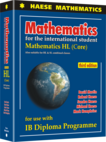
Discontinued Editions
This is a non-returnable item

Discontinued Editions - Preorder online now
This is a non-returnable item
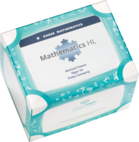
Discontinued Editions
This is a non-returnable item
Register your interest for information related to Haese Mathematics products